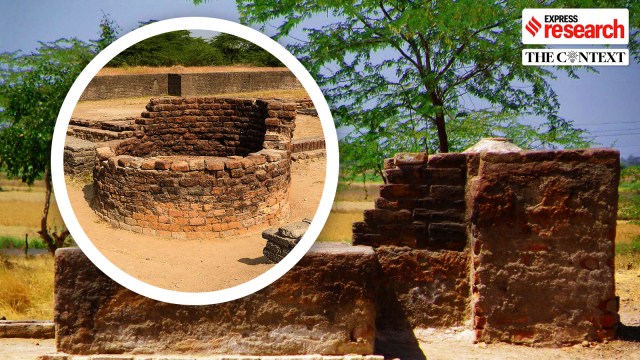The recent accident at Lothal, a renowned Harappan archaeological site in Gujarat, has underscored the importance of adhering to guidelines while taking up field research. Surabhi Verma, a 23-year-old researcher from IIT Delhi, died when the trench she entered to collect soil samples collapsed on November 27. The effort was part of ongoing research on the impact of climate change on the Indus Valley Civilisation. Verma’s supervisor Dr Yama Dixit, a prominent paleoclimate expert, sustained injuries and is under treatment.
The incident has drawn attention to the archaeological site at Lothal which has a rich history and draws a significant number of researchers who explore its role as a centre of ancient trade and urban planning.

Lothal – a key Harappan settlement
The Harappan Civilisation, South Asia’s first urban culture, included Lothal, a key settlement between the Sabarmati and Bhogavo rivers in Gujarat’s Saurashtra region. The site is believed to be a low natural mound that has been elevated and reinforced with mud and mud bricks multiple times to protect it from annual floods. Interestingly, The name Lothal is thought to have its origins in the Gujarati words ‘Loth’ and ‘thal,’ meaning ‘the mound of the dead.’
Sir Mortimer Wheeler in his book The Indus Civilisation notes, “The Harappan settlement bears all the essential marks of the Indus Civilisation: straight streets, with regimented buildings, baths, elaborate drains and man-holes.” In 2014, Lothal was proposed for inclusion in the UNESCO World Heritage list.
Early excavations at Lothal
Early excavations in Harappa and Mohenjodaro by the Archaeological Survey of India (ASI) were met with little excitement, and it wasn’t until 1924 that ASI Director General John Marshall formally announced the discovery of the Harappan Civilisation.
Over time, new sites have been uncovered, and old ones revisited. As historian Upinder Singh observes in A History of Ancient and Early Medieval India, “The amount of data and information has been steadily growing and continues to grow.” Singh observes that in recent years, scholars have increasingly turned their attention to smaller sites such as Allahdino near Karachi and Ballu in Haryana.
Following India’s independence, archaeologist S R Rao led efforts to uncover Harappan cities in the Saurashtra region, resulting in the discovery of Lothal. Excavations by the ASI between February 13, 1955, and May 19, 1960, revealed an ancient city strategically situated along a major river system on the trade route connecting Sindh and Saurashtra. This site yielded one of the most extensive collections of antiquities in modern Indian archaeology.
Story continues below this ad
World’s oldest dockyard
Lothal stands out for its engineering marvels, including the world’s oldest dockyard, measuring 214×36 metres, with an innovative water-locking mechanism. Artefacts such as bead necklaces crafted from amethyst, axes and fish-hooks of copper or bronze point to maritime trade with ancient civilisations like Mesopotamia, Egypt, and Persia. The city’s design showcased advanced urban planning, featuring a grid layout, sophisticated drainage systems, and a rectangular basin believed to function as the dockyard.
Research from the National University of Ireland, Maynooth, indicates that around 4,500 years ago, a significant climate shift reduced summer monsoon rainfall in the Indus Valley, devastating regions reliant on seasonal rains. This led to the decline and abandonment of urban centres in southern regions, including parts of present-day Gujarat, such as Lothal.
Recently, the Union Cabinet approved the development of the National Maritime Heritage Complex in Lothal, a project designed to celebrate India’s 4,500-year-old maritime heritage. The complex will feature a lighthouse museum, a five-dimensional theatre, and interactive exhibits. Upon completion in two phases, it is expected to be the world’s largest maritime heritage complex.

































